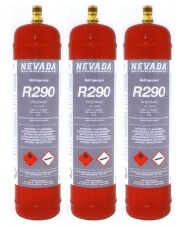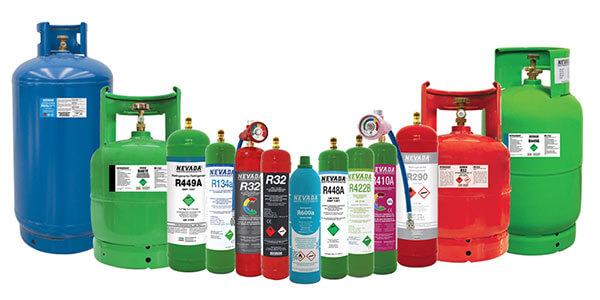In recent years, the refrigeration industry has been undergoing a significant shift towards more environmentally friendly solutions. One such revolutionary refrigerant is propane R290. With its excellent thermodynamic properties and low environmental impact, R290 has emerged as a viable alternative to traditional refrigerants. In this article, we will explore the history of propane R290, discuss its standards and regulations, compare it with other refrigerants, and delve into a use case where it is widely employed.
A Brief History:
Propane, also known as R290, is a naturally occurring hydrocarbon gas. Its use as a refrigerant dates back to the early 20th century when it was first employed in domestic refrigerators. However, due to safety concerns and the emergence of synthetic refrigerants, propane R290 fell out of favor for several decades. In recent years, with a growing focus on sustainability and the need to reduce greenhouse gas emissions, R290 has made a remarkable comeback.

Standards and Regulations:
To ensure the safe use of propane R290, various standards and regulations have been established. The International Electrotechnical Commission (IEC) has set standards such as IEC 60335-2-89, which specifies safety requirements for refrigeration appliances using flammable refrigerants, including R290. These standards cover aspects like system design, installation, and maintenance to mitigate risks associated with the flammability of the refrigerant.
Comparison with Other Refrigerants:
When compared to traditional synthetic refrigerants such as hydrochlorofluorocarbons (HCFCs) and hydrofluorocarbons (HFCs), propane R290 offers several advantages. Firstly, R290 has a low global warming potential (GWP) of 3, making it an environmentally friendly choice. In contrast, many HFCs have GWPs in the thousands. Secondly, R290 is an excellent heat transfer medium due to its high latent heat of vaporization. This enables highly efficient cooling and lower energy consumption. Additionally, R290 is readily available, cost-effective, and easily recyclable, further contributing to its appeal as a sustainable refrigerant.
Use Case:
Domestic and Commercial Refrigeration: Propane R290 finds extensive use in domestic and commercial refrigeration applications. In domestic refrigerators, R290-based systems offer improved energy efficiency, ensuring lower electricity bills and reduced environmental impact. Commercial refrigeration, including supermarket refrigeration units, display cases, and cold rooms, has also embraced R290 due to its excellent performance and sustainability. R290-based systems have demonstrated comparable or better cooling capacities compared to traditional refrigerants, all while significantly reducing greenhouse gas emissions.

Conclusion:
Propane R290 has emerged as a game-changer in the refrigeration industry, combining efficient cooling capabilities with environmental sustainability. Its low GWP, excellent thermodynamic properties, and adherence to safety standards make it an attractive choice for various applications. As the world continues to prioritize environmental consciousness, R290 is likely to witness further adoption and contribute to a greener and more sustainable future in refrigeration.
**Disclaimer: When working with propane R290, it is crucial to follow safety guidelines and regulations to prevent accidents or mishaps. Always consult professionals and adhere to local regulations when handling or installing R290-based systems.
